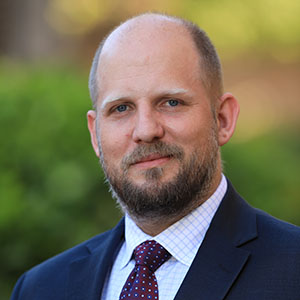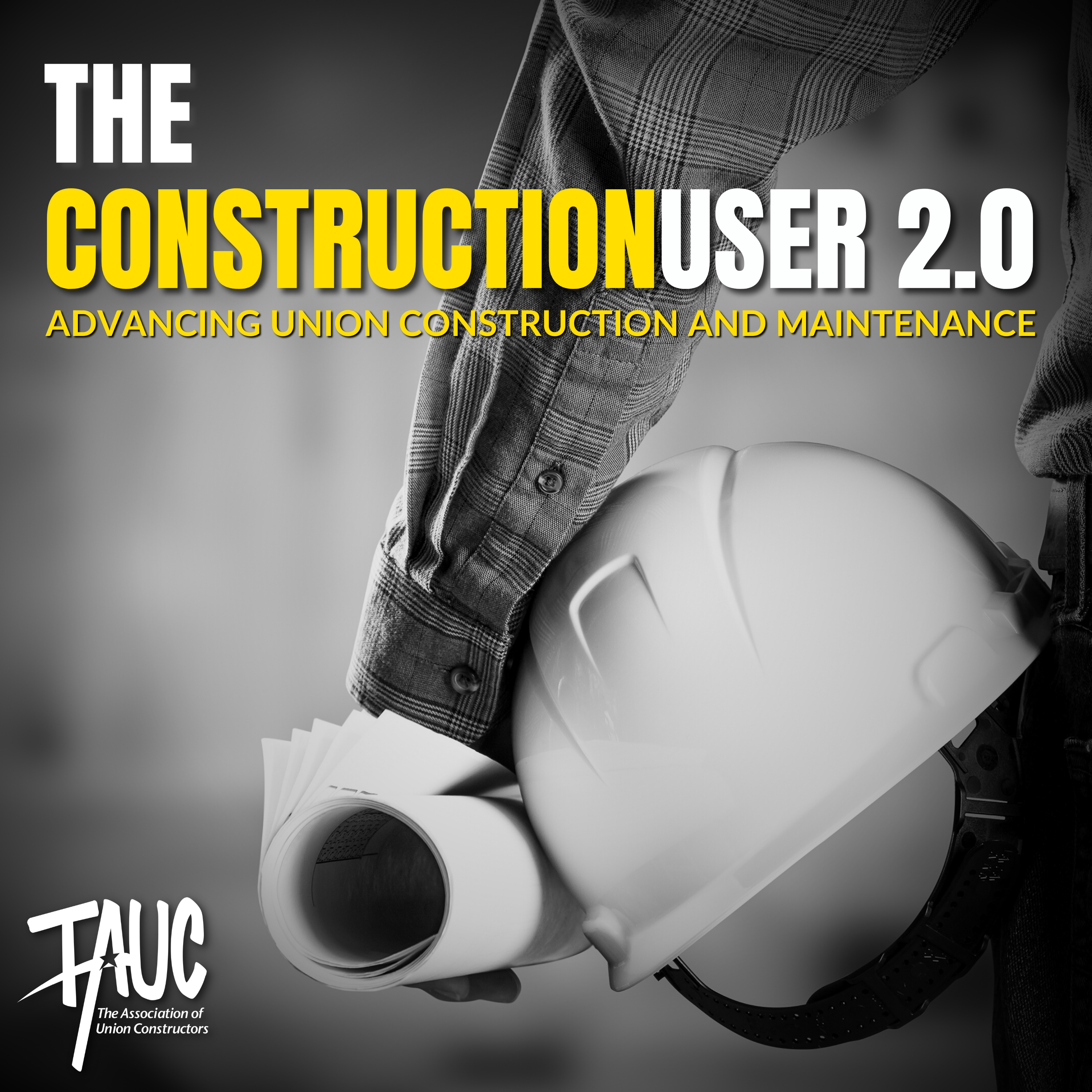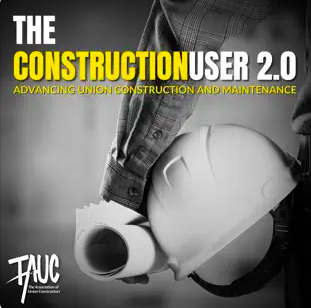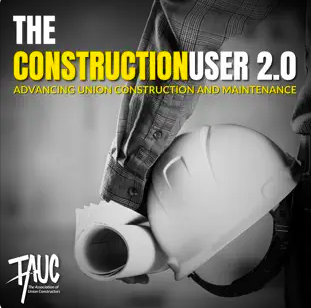Episode Transcript
Kirk: Today’s guest is a veteran of construction safety with more than 20 years experience, where she’s worked as the safety director for Alberici Constructors. She’s a respected leader in the industry, who serves on a number of industry committees, and is an advocate for the safety of construction workers across the country. If you’re talking construction safety, you should be talking to our guest today, Kathi Dobson.
Real quick. What is the last song you had stuck in your head, like couldn't get free, that you find yourself humming?
Kathleen: It's so weird. You probably know, I'm a huge Grateful Dead fan.
Kirk: I do know that about you. Yes.
Kathleen: The song that stuck in my head is Truckin', where they talk about it's a long, strange trip indeed, because the last project that I was on, there was something so crazy that I'm like, I've never seen this before. There's always that long, strange trip that we're taking in safety, in construction, and in life.
Kirk: Thank you so much for joining us today. It's going to be wonderful having you.
Kathleen: You're very welcome. It's my pleasure. I always like talking to you, Kirk.
Kirk: Yeah, I know. I've said that of the people I always look forward to at our events, getting a few minutes to talk to, you're absolutely one of my favorites.
Kathleen: Cool. We can talk about tattoos, we can talk about Harry Potter, or we can talk about something else.
Kirk: Absolutely. These are some of our go-tos. Today, let's talk a little bit about safety. You have been working in the organized safety industry for more than 20 years now. What have you seen in the culture of safety change, in the trades, and on job sites? What have been the big developments over the last forever?
Kathleen: I really do think that it's a change in the culture of the companies that we work with. When I started in 1999—it's been over 24 years that I've been with Alberici and conducting safety in the construction industry—we were the bad guys. We were the people that people ran from.
We were always not really very well-appreciated on job sites because we would be interfering with the process. Hey, can you take a long lunch because we need to get this task done? If you're not around, we can get it done easier and better, not necessarily safer.
From that, I think it's really a transition to where we're becoming more actively involved, we're becoming more engaged with the workforce. The people that work with us see us as allies and advocates rather than as hinderers and as cops. I think that that's a really positive influence that has just organically changed.
It wasn't really anything that somebody said, we have to change safety and here's how we're going to change it. It's just a matter of that adaptation to the way people think, the new generations of individuals that are coming on board, and representing the industry. I think that all of that has had a tremendous influence in the culture or the climate of safety within our organizations.
Kirk: I definitely am getting that from talking to a lot of people about this. You had mentioned something once a while back that I want to hear you expound on, and that safety isn't a commitment per se, as much as it's an ongoing concern.
There are things in this industry that are just inherently unsafe, but we still have to do them. Like you just referenced, there are times like, could you walk over there so we can do this and get it done? How do we handle the times that safety and the task almost seem mutually exclusive? How do we overcome those obstacles?
Kathleen: One of the things that I try to do is if I see something like that, if I can forecast that, it's great because then you have a bigger opportunity or a longer length of time to address it. When you see things that are conflicting with safety, it's that opportunity to say, hey, can we just stop and take 10 minutes to talk about this?
It's not really going to slow down anything that significantly if we just say, that doesn't look safe to me, or it looks like we could possibly do it in a different way. When you get the craft represented the form and the general format of the superintendent, the safety, the project manager, whoever it is that needs to be involved with it, and you can say, hey, you know what? I don't think we've really thought this out enough to where we can really mitigate the way that we're doing it right now.
Let's brainstorm, throw ideas out on the table, and let's come to a consensus agreement. Let's put it down on paper for this specific task only. If we need to involve the owner because sometimes they get real wonky on the way we're doing things, let's bring them on board. Let's explain why we're doing things the way that we're doing them. Let's explain that this is just a one time only like getting a variance from OSHA, but please don't let it take six months like it does or a year to get the things done.
The active participation with everybody and listening to everybody's voices, whether it's an apprentice who's only been on the job for a few weeks or a few months, to somebody who's very well-experienced. We all have different perspectives on our risk tolerance, we all have different perspectives on how we feel that we could get the job done better or safer, and collaborate. I think that's really my message when you see those things that are going in this direction at 180 to bring them back to center point and to just share ideas.
Kirk: I'm going to ask one of those questions that just feel stupid on its face. I'll admit it, it might be. We're talking about skilled tradesmen and professionals that have been doing this for years, and they know what they're doing. Why is having an overarching commitment to safety or having a safety professional on there to, forgive the phrase, be a whole monitor to getting the job? Why is that important?
Kathleen: I can't say it's getting less important. But I think that as those experienced craft professionals become more engaged in safety, and as they recognize that safety is their responsibility, in addition to my responsibility, it becomes the responsibility of everyone on the jobsite. It shouldn't just be, oh, hey, we've got a safety person here so we can just neglect everything that's going on, because one person can't be in a hundred different places. If you've got a big project, you're going to have a hundred different tasks going on.
When the light bulb clicks with the key people on the project, like your general foreman, your foreman, and your superintendents, then it's less necessary to have that home monitor (as you say) standing around saying, oh, wait. Pointing your finger and saying, hey, make sure you put your safety glasses on, which may be the least of the risks that are out there.
Sometimes we don't see the forest from the trees. If we're only looking for those real obvious things, we can't get into the weeds and look at the things that could really harm somebody. On every job and every task, you could probably jot down two or three things, those sticky things. I won't use what most people use, but the stuff that can kill you is out there. When you have everybody looking, it makes it much easier than saying, oh, we got to have that safety person on the job site.
Kirk: Yeah. Everyone's in charge of safety. Literally, everyone has the ability to say, this probably isn't safe. We maybe shouldn't do this. That kind of commitment.
Kathleen: That's where you have to make certain that the youngsters understand it. I'm saying apprentices who aren't necessarily young anymore. But the apprentices or those people with less craft experience need to have a voice also. They need to understand, it's okay to speak up. You are in an inclusive culture where we're not going to say, oh, well, so you know it all, don't you? Even though you've only been on the job for three weeks and I've been on the job for 20 years.
You also need to get to those people with a lot of experience who just watch. They don't really ever talk. They just put their head down. They do their work, but they know what's going on. They know the things that are safe and unsafe. You need to get them to open up, too. Those are the tougher nuts to crack.
Kirk: I really liked that. You said something earlier, and then it ties there of just that collaboration and bringing in the younger people. What kind of room is there for creative problem-solving? Is safety a rigid rulebook of, these are the correct ways? What kind of room is there in like, hey, you know what? There's a safer way or maybe a faster way that we can they'll be safe? What kind of room for creative collaboration is there?
Kathleen: Obviously, we have rules and regulations that all companies feel that they need to follow, and we do. If we were not compliant with our federal OSHA standards, with our overriding ANSI/ASSP standards or whatever, we would be putting the company at tremendous risk for liability with OSHA citations, with the potential of getting somebody injured, or property damage, whatever.
If you look strictly at the regulations, yes, it's absolutely black and white, but we all have a subjective side to it. Even those compliance officers who come on the job site. Unless it's something that they can take a tape measure and say, your guardrail is not 42 inches plus or minus 3, there's always some flexibility (I think) in the way that we do things. It may not be as flexible as some people would like to see.
Again, we have different levels of risk tolerance, and different experiences that we've had. If I've been on a job, where somebody tripped and fell over an extension cord and fractured their ankle very badly, I'm going to have a different outlook than somebody who just steps over the extension cord every single day or has stumbled but never fallen.
We need to look at all of those experiences. Is it completely black and white? No. There's a little bit of gray in there. There's not necessarily a full blown, whoa, you can just do what you want, obviously. We're not the Wild West.
Kirk: Absolutely. I think that we've all seen the pictures. They're fairly famous, the pictures of the iron workers eating lunch on the I-beam over New York City. Luckily, we've come a long way since the unharnessed beam walkers of the turn of the century in the 1900s, which brings me changing subjects a little bit.
Just in the last 10 years, this next stage of revolution has been the marriage of physical and mental safety and the mental health that is now being really, really recognized as a big part of it. We have the dial 988, things that our organization as well as many others are really advocating and sending out. Can you talk to me a little bit about your perspective of that hitting the job sites?
Kathleen: I really didn't know that there was a big problem. I don't think anybody really knew that there was a big problem even more than five years ago. Somebody said, the statistics are out there, and they're really terrible. Construction has a five times higher rate of suicide than the general population. Construction has a tremendously high number of opioid-addicted personnel, users, overdoses, and things like that.
It was probably 2018 when I somehow stumbled across something from the Construction Industry Alliance for Suicide Prevention. There was a whole bunch of information that talked about suicide, mental well-being, and the opioid crisis I just never knew. When that message came to me, I said, I have to do something about it.
I think the first thing that we did was I took the message to the organization to talk to other organizations that I belong to. I said, hey, there's a problem, there's a crisis. I know within our own company, we've worked very closely with the AGC of Missouri. The AGC of Missouri is probably one of the leaders within our industry of having materials in advocating.
I might have the year one off, but I want to say it was 2018 during suicide prevention month or suicide prevention week, which is in September. We held a big stand on one of our projects. We handed out the first set of coins that I ever saw.
When we handed those out and handed out other materials that were available to the workforce, first of all, you could hear a pin drop after the conclusion of the presentation. People were gasping that there was such a tremendous issue, just like I felt when I first found out. Then people came up to us and started asking, can we get more of these coins? Or where did you get these because we want to share them?
We had other people say, thank you for this because I didn't know who to turn to. I have a problem, I have depression, anxiety, or whatever. I think it really made a difference and really has had a tremendous influence on the industry. When you go to the TAUC meetings and the meetings within other organizations like IMPACT, NICA, SMACNA, and NCAA, all of those (I think) really have opened up the conversation so that we could talk about it.
The one thing that I would love to see on job sites is to have Narcan available. You never know who is an opioid user and who may take one too many pills that day, or who may have gotten their pills off the street because they can't go to their physicians anymore. The medication contains fentanyl, which is absolutely deadly.
Getting that message across, actively talking to people about, don't bully or harass people, that only contributes to mental well being issues. Make certain that your programs talk about DENI and make sure that you've got your resources readily available for those individuals who say, hey, I just can't cope anymore.
From that first point back in 2017, 2018, or 2019 to today, I think we become much more aware because many, many, many more people during the pandemic, when everything was shut down, or when people were isolated at work, feeling anxiety, depression. The world is closing in on me because of my finances or whatever the situation is. We need to continue the conversation, but it's definitely come a long way in the last five years.
Kirk: Now, a follow-up that I don't know has an answer. That's why I'm actually really interested to hear your insights. I was in the military, and I know lots of people that have been deployed. A deployment has a certain up tempo. I swear it's hard, it's long, it's long days, it's grueling, lots of traveling, lots of heavy things, but you knew the whole time, this is a year, this is 9 months, this is 18 months. There's always this many days till I go home.
A lot of these veterans come home, and they do really well in the trades. Then you go into a job site, where yeah, the job site has a three-month project, a six-month project, a three-year project, whatever. These are by nature long hour days, sometimes hundreds of miles from your house. They are grueling, heavy, hard work.
If you're a trades person and this is your career, there's no real end in sight. I'm not saying that you need an end in sight. I'm just saying that it's just going to keep going. After this project, there will be another one, there will be another one. How do we approach a problem like mental health when the job is the job? This job is going to be long and hard forever. How do we address a problem that is mentally taxing at its baseline?
Kathleen: I think one of the solutions (I guess) is to make certain that everybody that works on that project understands that their unions have member assistance programs. For those of us who work for a contractor, who are the white hats on the jobsite or whatever, we have employee assistance programs, but they don't cross over into the building trades. The building trades have resources that are available.
I think, especially, when people go out of town, they need to know, hey, you know what? Just down the road, there's a union hall there, and the folks at the hall can help you out if you are having some kind of a crisis. I think that it's essential that we take those resources and make certain that people know.
Late at night, if your mind is going in places where you don't want it to go, you can reach out and make a phone call. Whether it's dialing 988, whether you're calling your local hall, or whatever, they talk about the tough guy mentality where people in the industry don't want to say, I'm having a problem.
But we know that many, many, many people have problems. It shouldn't be an issue to anybody who says, hey, you know what? I'm seeing a counselor now, or my wife and I are in family counseling, or I'm having issues with the kids. It's okay to talk about it.
I think that one of the things that people forget is that when we send individuals out of town, especially if they're not part of a big gang, and they're tight-knit with the whole crew, they're going to go home at the end of the day, and they're going to be by themselves. That's when they're going to get a call from their family because the kids had to go to the hospital to get stitches or the lawnmower broke down. It's a crisis at home. Or you know what? We're not getting your money that's supposed to be directly deposited. Those kinds of things crop up all the time.
If there are no resources, no local resources that the individuals know about, they're dealing with it on their own. They need to know that there are people out there and resources that are available for them. Human resources work very well for those of us who work directly for the company. But if you are hired out of the union hall, those resources aren't necessarily available.
Your human resource contact is either the safety person who did your orientation, the administrator in the trailer who hands you your paycheck, or your superintendent. That's who people see their human resources as. I would have to venture to say that if we lined up a bunch of people who worked in our office and lined up a row of craft people on the other side and said, hey, pick out who the human resource person is, probably most of them wouldn't be able to do that.
HR needs to be as involved with trade and field employees as they do with the office employees or the administrative employees. It's just my gut feeling. I know that the response at least from human resources that I know would say, but they have member assistance programs.
Kirk: That makes a lot of sense and I agree. If you don't know where your life vest is, you don't know how to reach for it, and you can only use the safety things that you know about, I think that makes a lot of sense.
My last question. It goes from where we started all the way through that, to what's next? What's the future? Not just in mental health, but not just in safety, but everything from we have new AI coming out, we have new automations, and new robots. What does the future of safety look like with the way the world is moving?
Kathleen: I really think that technology is going to help us to advance safety efforts. We've already seen it with drones. We can soar over the top of structures and be able to see that that anchor bolt isn't tightened, or the bolts aren't tightened down the way that they should be. For quality, and we can do it for safety.
The lone worker devices that they have available, the proximity devices, all of those technological things. I don't know really what the next technology thing is, but I see things like virtual reality and educating people on how to walk those beams from the ground level, instead of being even four feet in the air. It can really make a difference.
I am excited to see what that future brings to us. I think that it's in the lines of artificial intelligence and virtual reality, augmented reality, all of those things that people that are way smarter than I am and are way more techy than I am, already are generating. The wheels are already turning their brains about those kinds of things.
Kirk: I absolutely love it. We're looking forward to seeing if we see any new things at IGI this year that you're going to talk about, anything coming down the pipe. Kathi, thank you so much for joining us today. It's always great to talk to you. I love some of the insights we had today.
Kathleen: Thank you very much. I appreciate it. Good to talk to you, too.



